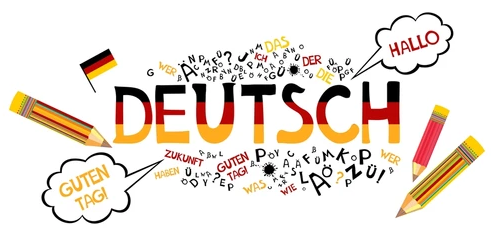Cambodia, a beautiful country in Southeast Asia, is known for its rich cultural heritage and ancient temples. At the heart of Cambodia’s identity lies the Cambodia National Language, Khmer. In this article, we will delve into the history, characteristics, importance, and practical aspects of the Khmer language. Whether you’re a language enthusiast, a traveler, or someone interested in Cambodian culture, this article will provide you with valuable insights into the world of Khmer.
History of the Cambodia National Language
The Khmer language has a fascinating history that stretches back over a millennium. It evolved from the Mon-Khmer language family, with influences from Sanskrit and Pali, ancient languages of India. During the glorious Angkor Empire, Khmer flourished as the language of literature, religion, and administration, leaving behind numerous inscriptions and stone carvings.
The Importance of the Khmer Language
The Khmer language holds immense cultural significance for Cambodia. It serves as a symbol of national identity, connecting the Cambodian people to their rich history and heritage. Moreover, the language plays a vital role in preserving and promoting Cambodian traditions and values. Efforts are underway to revitalize and safeguard the Khmer language for future generations.
Khmer Language Structure and Characteristics
Khmer is known for its unique phonetic system and rich set of vowel sounds. The language has its own distinct script, which is derived from ancient Brahmi script. Khmer grammar follows a subject-verb-object (SVO) order, and it employs various affixes and particles to convey nuances of meaning. The writing system is complex, featuring a combination of consonant clusters and subscript characters.
Learning Cambodia National Language
Learning Khmer can be a rewarding but challenging experience. The language’s unfamiliar sounds and writing system require dedicated practice and perseverance. However, with the right resources and learning strategies, mastering Khmer is within reach. Several language courses and online platforms cater to learners of all levels, providing structured lessons, audio recordings, and interactive exercises.
Khmer Language in Modern Cambodia
As the official language of Cambodia, Khmer holds a prominent position in government, education, and administration. It is widely spoken by the majority of the population, alongside various regional dialects. Despite the country’s linguistic diversity, the Khmer language serves as a unifying force, enabling communication and fostering national cohesion. It is also prevalent in media, literature, and the performing arts.
Khmer Language and Tourism
For travelers visiting Cambodia, having some knowledge of Khmer can greatly enhance their experience. Interacting with locals, understanding street signs, and ordering food become more accessible with basic Khmer language skills. Learning common phrases such as greetings, numbers, and simple questions can help bridge the communication gap and show respect for the local culture.
Khmer Language in Business
With Cambodia’s growing prominence in the global economy, the Khmer language has gained significance in the business sector. International companies operating in Cambodia benefit from employees who can effectively communicate in Khmer, building trust and fostering strong relationships with local partners. Proficiency in Khmer opens up career opportunities in fields such as translation, interpretation, tourism, and cross-cultural consulting.
Challenges and Future Outlook of Cambodia National Language
The Khmer language faces certain challenges in the modern era. Globalization and the influence of other languages pose a risk to its preservation. Efforts are being made to address these challenges through language preservation initiatives, education programs, and the integration of Khmer in technology. The future of the Khmer language depends on the collective efforts of Cambodian society to embrace, protect, and promote its linguistic heritage.
Conclusion
The Khmer language stands as a testament to Cambodia’s rich history and cultural identity. It plays a vital role in preserving traditions, fostering national unity, and enabling communication within the country. Whether you’re interested in Cambodian culture, planning a trip to Cambodia, or seeking new linguistic challenges, learning Khmer opens doors to a vibrant world of knowledge and understanding.
FAQs
- How many people speak Khmer?
Khmer is spoken by approximately 16 million people in Cambodia and diaspora communities around the world.
- Is Khmer difficult to learn?
Learning Khmer can be challenging, especially for speakers of non-tonal languages. However, with dedication and practice, it is certainly attainable.
- Are there any similarities between Khmer and other languages?
Khmer shares some similarities with other Southeast Asian languages, such as Thai and Lao. However, it has its own unique features and linguistic characteristics.
- Are there any online Khmer language courses?
Yes, there are several online platforms and language learning websites that offer Khmer language courses for beginners and advanced learners.
- What are the main dialects of Khmer?
The main dialects of Khmer include Standard Khmer (spoken in Phnom Penh and central regions), Northern Khmer, and Southern Khmer.
References:
- Herington, J. (2000). A History of the Khmer Language. In Cambodian Linguistics, Literature and History: Collected Articles (pp. 1-35). Institute of Southeast Asian Studies.
- Enfield, N. J. (2003). Linguistic epidemiology: Semiotic contagion and the spread of words. In S. Marmaridou, K. Nikiforidou, & E. Antonopoulou (Eds.), Reviewing Linguistic Thought: Converging Trends for the 21st Century (pp. 421-433). John Benjamins Publishing.
- Cambodia Ministry of Education, Youth and Sport.

